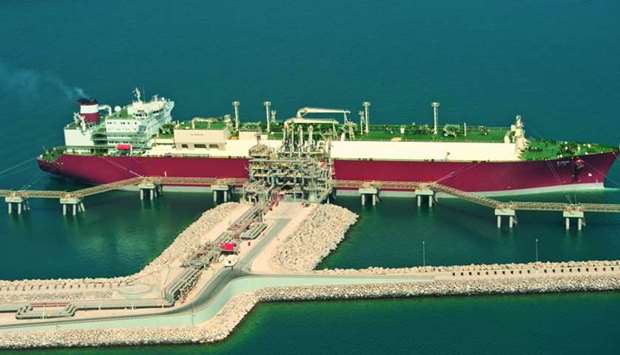Qatar’s industrial sector continued to gain momentum with the producer price index (PPI) surging more than 8% in December 2020 against the previous month’s level, aided by hydrocarbons and certain manufactured products, especially refined petroleum products and basic chemicals, according to official estimates.
Qatar's PPI – a measure of the average selling prices received by the domestic producers for their output – however saw a 20.9% year-on-year fall, according to figures released by the Planning and Statistics Authority (PSA).
The PSA had released a new PPI series in late 2015. With a base of 2013, it draws on an updated sampling frame and new weights. The previous sampling frame dates from 2006, when the Qatari economy was much smaller than today and the range of products made domestically much narrower.
The mining PPI, which carries the maximum weight of 72.7%, reported a robust 9.4% surge on a monthly basis in December 2020 as the selling price of crude petroleum and natural gas soared 9.4% and that of stone, sand and clay by a marginal 0.8%.
The PPI for mining registered a 25.2% shrinkage on a yearly basis in December last year on the back of a 25.3% slump in the selling price of crude petroleum and natural gas and 7.7% in stone, sand and clay.
The manufacturing sector, which has a weight of 26.8% in the PPI basket, witnessed a 5.6% increase month-on-month in December 2020 on a 9.5% jump in the selling price of basic chemicals, 6.3% in refined petroleum products, 2.3% in paper and paper products, 1.4% in rubber and plastics products, 0.7% in juices, 0.5% in grain mill and other products and 0.3% in dairy products; even as the price of basic metals declined 1.6% and beverages 0.9%.
The manufacturing sector PPI had seen a yearly 11.8% contraction in December 2020 as the selling price of refined petroleum products fell 16.2%, basic chemicals (11.7%), other chemical products and fibers (6.9%), cement and other non-metallic mineral products (5.8%), rubber and plastics products (3.1%) and grain mill and other products (0.3%).
However, there was a 12.9% expansion in the selling price of basic metals, 6.4% in paper and paper products, 5.6% in juices and 0.1% in dairy products.
The utilities group, which has a mere 0.5% weightage in the PPI basket, saw its index surge 16.6% on monthly basis because the selling prices of electricity had risen 30.4% and that of water by 1.5% in December 2020.
The index had seen a 8.3% growth year-on-year last December with the selling price of electricity and water soaring 8.2% and 8.5% respectively.
Qatar's PPI – a measure of the average selling prices received by the domestic producers for their output – however saw a 20.9% year-on-year fall, according to figures released by the Planning and Statistics Authority (PSA).
The PSA had released a new PPI series in late 2015. With a base of 2013, it draws on an updated sampling frame and new weights. The previous sampling frame dates from 2006, when the Qatari economy was much smaller than today and the range of products made domestically much narrower.
The mining PPI, which carries the maximum weight of 72.7%, reported a robust 9.4% surge on a monthly basis in December 2020 as the selling price of crude petroleum and natural gas soared 9.4% and that of stone, sand and clay by a marginal 0.8%.
The PPI for mining registered a 25.2% shrinkage on a yearly basis in December last year on the back of a 25.3% slump in the selling price of crude petroleum and natural gas and 7.7% in stone, sand and clay.
The manufacturing sector, which has a weight of 26.8% in the PPI basket, witnessed a 5.6% increase month-on-month in December 2020 on a 9.5% jump in the selling price of basic chemicals, 6.3% in refined petroleum products, 2.3% in paper and paper products, 1.4% in rubber and plastics products, 0.7% in juices, 0.5% in grain mill and other products and 0.3% in dairy products; even as the price of basic metals declined 1.6% and beverages 0.9%.
The manufacturing sector PPI had seen a yearly 11.8% contraction in December 2020 as the selling price of refined petroleum products fell 16.2%, basic chemicals (11.7%), other chemical products and fibers (6.9%), cement and other non-metallic mineral products (5.8%), rubber and plastics products (3.1%) and grain mill and other products (0.3%).
However, there was a 12.9% expansion in the selling price of basic metals, 6.4% in paper and paper products, 5.6% in juices and 0.1% in dairy products.
The utilities group, which has a mere 0.5% weightage in the PPI basket, saw its index surge 16.6% on monthly basis because the selling prices of electricity had risen 30.4% and that of water by 1.5% in December 2020.
The index had seen a 8.3% growth year-on-year last December with the selling price of electricity and water soaring 8.2% and 8.5% respectively.




